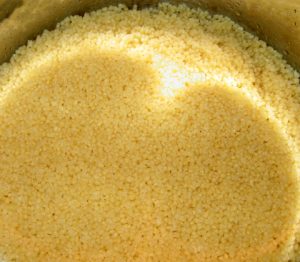Starting the Mediterranean Diet can be done in a few easy steps. The first step is to learn the basic principles of the mediterranean diet. The second step is to understand the total amount of which foods defines this diet. The third step is to study the rules, tips, guides, food and healthy eating plans and other related resources.
Basic Principles of the Mediterranean Diet
This diet is not just about food, it is also about having fun and being social. The main principles are to focus on plant based foods, eat smaller amounts of red meat (once per week or less) with much less fat and little or no sugar. Although that may sound difficult, when you look at the meal plans you will see that there is a lot of interesting, inexpensive and great food ideas.
Food Groups of the Mediterranean Diet
10% Red meat and Sugars
Less than ten percent of all the calories and food that you eat should be red meat or sugars. This includes types of sugars found in sweetened fruit juices, sweetened yogurts or other sweetened foods. remember that mince meat is also read meat, so is pork, beef, lamb and mutton. You should avoid all processed meats completely. (See the dietmy.com mediterranean diet meal plans, mediterranean diets and other articles for more information)
20% Fish and Seafood
There is such a large variety of seafood, for example: Fish, Shellfish, Crustaceans, Molluscs, Prawns and more. There are also different methods of preparation, even including the non traditional mediterranean methods, like suchi. (See the dietmy.com mediterranean diet meal plans, mediterranean diets and other articles for more information)
30% Poultry and Dairy (and Poultry & Dairy products like eggs, milk, cheese and yogurt)
Poultry includes: Chickens, Turkeys, Ducks, Geese, Ostrich and even Emu. Avoid sweetened diary products and milk blends and be careful of low fat yogurts with added sugars. Always be extra careful when seeing “low fat” and a food label as it usually means “extra sugars”. Different cheeses could also be added to salads. (See the dietmy.com mediterranean diet meal plans, mediterranean diets and other articles for more information)
40 % Fruits, Vegetables, Grains (whole), Vegetable Oils (Olive, Peanut, Canola), Beans, Nuts, Legumes, Seeds, Herbs and Spices
Traditional mediterranean diet vegetables include Broccoli, Brussels Sprouts, Cabbage, Carrots, Eggplant, Leeks, Onions, Mushrooms, Peas, Peppers, Pumpkin, Spinach, Sweet Potatoes, Zucchini and traditional salad ingredients like Asparagus, Fennel, Beets, Celery, Cucumbers, Radishes and more! Fruits like Tomatoes, Apples, Grapes, Melons, Olives, Strawberries, oranges, Pears and more! (See the dietmy.com mediterranean diet meal plans, mediterranean diets and other articles for more information)
Rules of the Mediterranean Diet
- Eat in a social setting (With friends and/or family)
- Make effort in preparing (or when dining out, ordering) your food – When dining out, discuss the food options, take more time to select the options that matches the mediterranean diet (you should find that there are more than one!) When preparing your food try to do that in a social setting, make each meal an event.
- Drink a glass of water before or with each meal (and have a glass of wine a few times a week, if you want)
- Make shopping an event, take the time to read food labels, chat with some fellow shoppers, visit more fresh food markets, talk to the vendors about their produce
- Eat food in the groups in the mediterranean diet ratio as measured on a weekly basis.
- Eat less than 180 grams of red meat per week, eat very little sugar or no sugar (avoid sweeteners). No processed meats, experiment with spices, use much less salt.
Advertising

All information provided for information & education purposes only. Nothing published on https://dietmy.com is intended as substitution for medical advice, diagnosis, or for any treatment.
